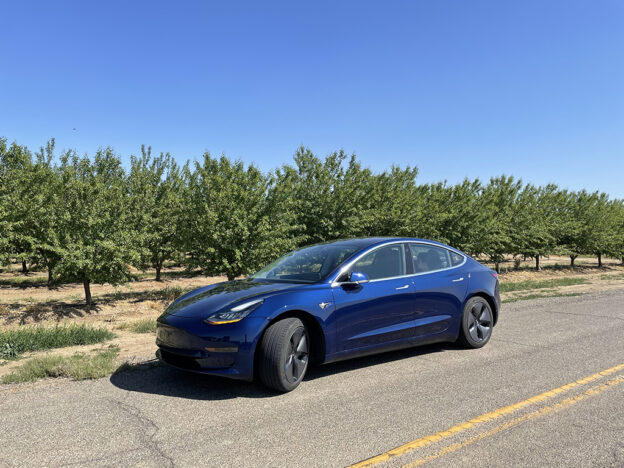Part 2 of my three-year review covers: The places we’ve been; Where we charge; and Battery pack status. Links to Parts 1-4 are at the bottom.
1) Where We’ve Gone
80% of my mileage has been commuting back and forth to work and running errands. During normal times that was 50 miles a day on weekdays and a bit less on weekends. The Model 3, like all other EVs, handles the daily driving with ease. The remaining 20% of my mileage came on longer trips for work and fun.
Something to keep in mind: while 20% of my mileage came on longer trips, those trips represented a small percentage of my time. If you look at the number of days we spent on those trips, it was less than 4% (42 days over 3 years). So 96% of the time I was just driving back and forth to work. Any shorter range EV would handle that job perfectly – the range of our Model 3 and Tesla’s Supercharger network came in to play for us on the longer trips.
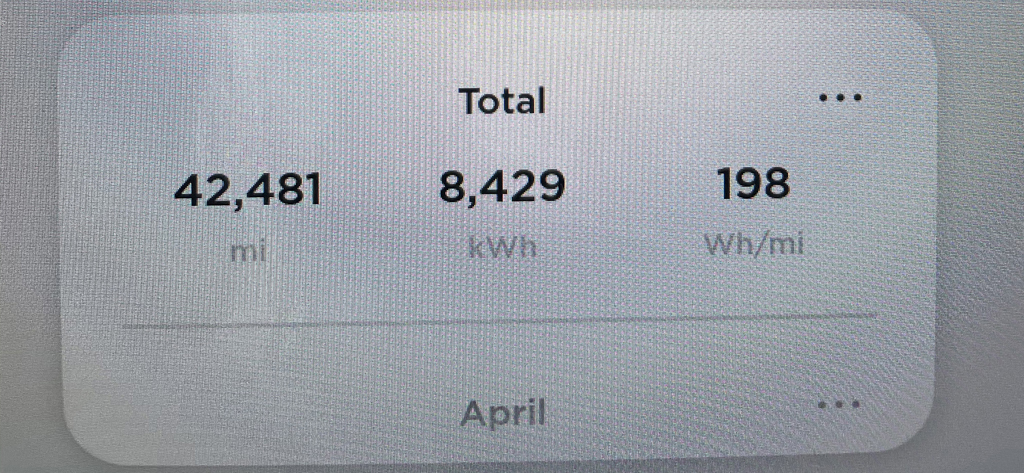
The fun trips included: There and back day trips; Regional trips around California; and Road trips. Spoiler: The Model 3 is a great car for road tripping.
Day trips. The day trips were 150-300 mile round trip drives. Examples for us included visits to the Bay Area, Pacific beaches, hiking trails, state parks, etc. On the shorter 150 mile day trips I would charge to 85% SOC the night before and wouldn’t need to charge that day. On the longer 300 mile day trips I would usually stop at a Supercharger somewhere along the way, usually for lunch.
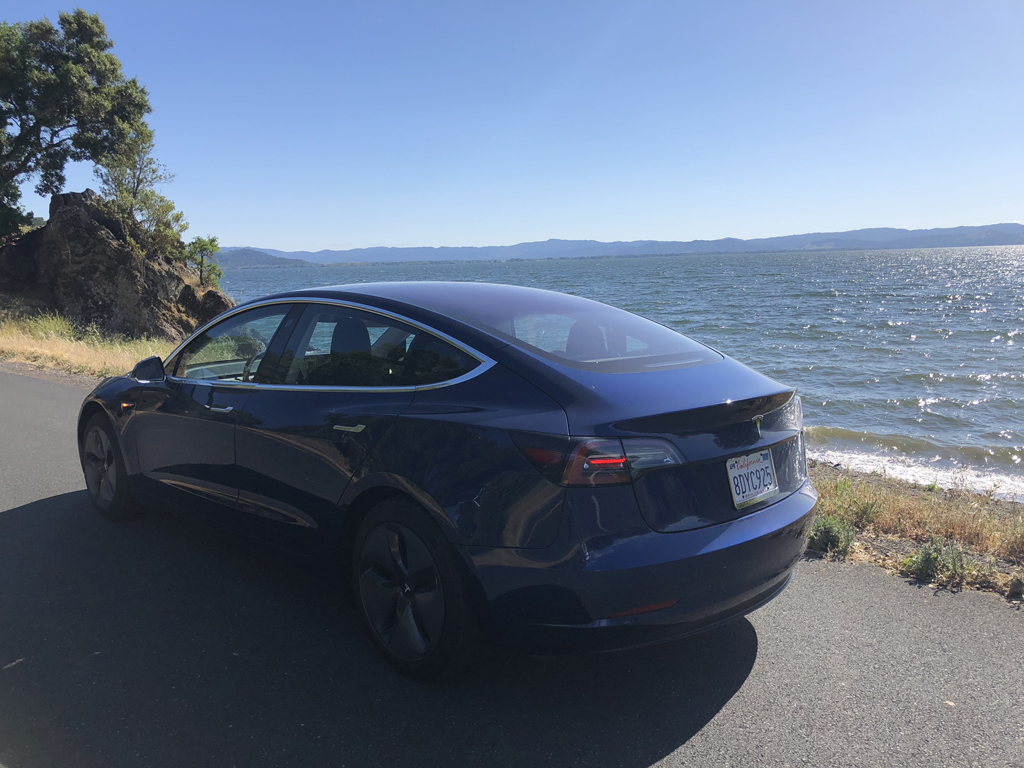
Regional trips: These were 500-1200 mile trips where we’d stay the night somewhere. Examples included a work trip to San Diego, camping trips, and visits to state and national parks.
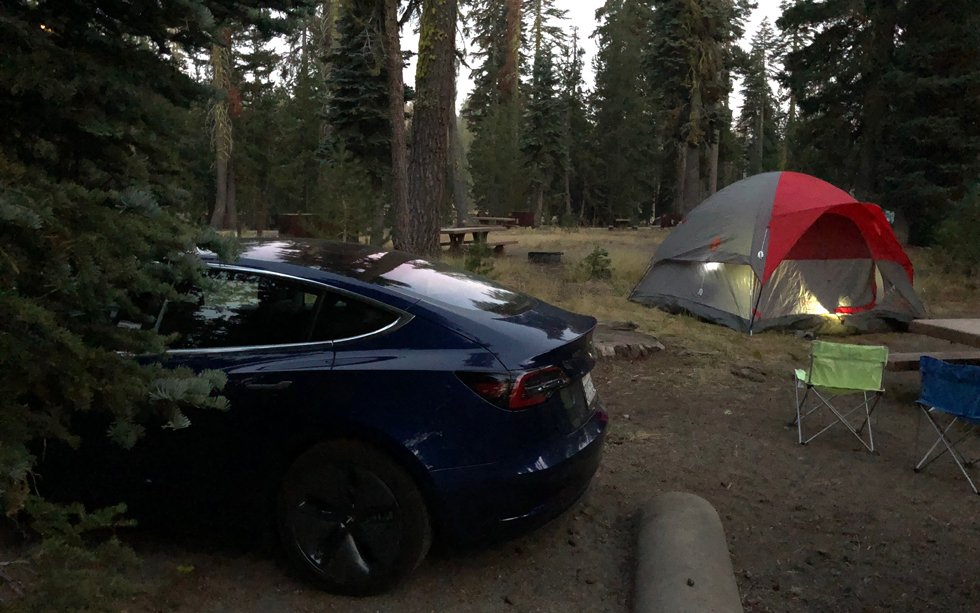
We used Tesla’s Supercharger network on these trips. I use A Better Route Planner ahead of time to select the best charging stops for our trips, and plan charging stops for lunch or dinner breaks
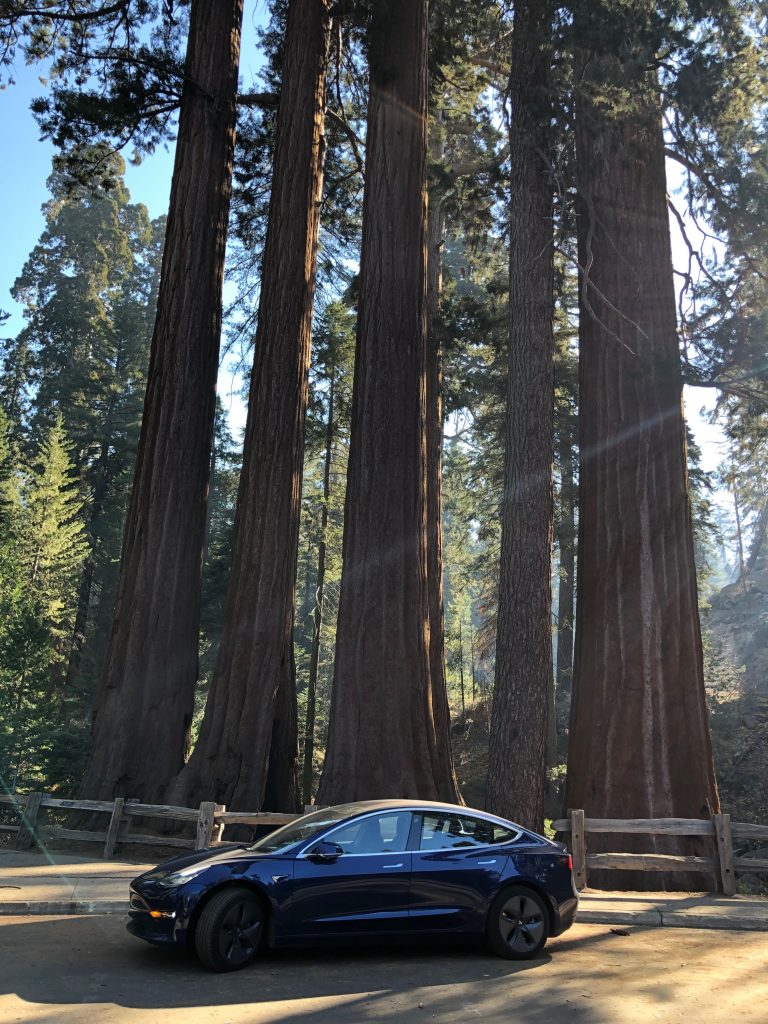
Road Trips: We’ve gone on two road trips. One was a family trip to the Grand Canyon. That was 800 miles and we did the drive in one day. Total driving and charging time for 800 miles was 16 hours on the way there, 15 hours on the way back.
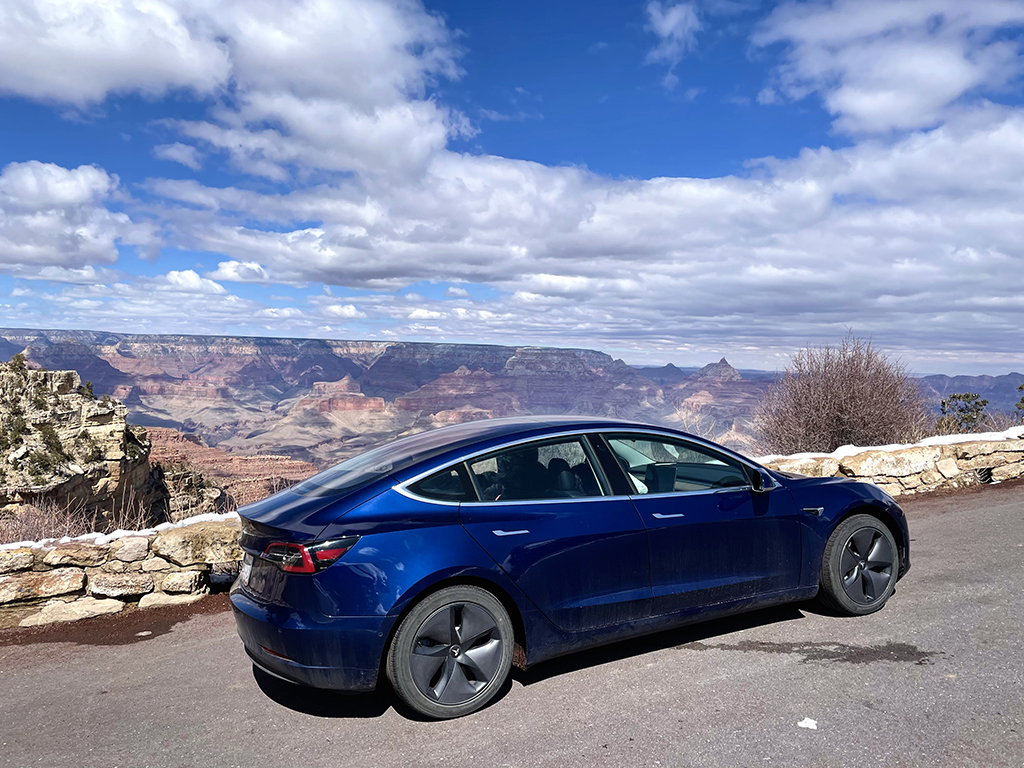
The other road trip was a week-long solo drive out to Albuquerque and back through 6 states at just over 2700 miles. I’ve read about folks who’ve racked up serious mileage on Odyssean voyages all over the U.S. We haven’t made a cross-country trip yet, but our 2 trips have given us a taste for road-tripping in the Model 3.
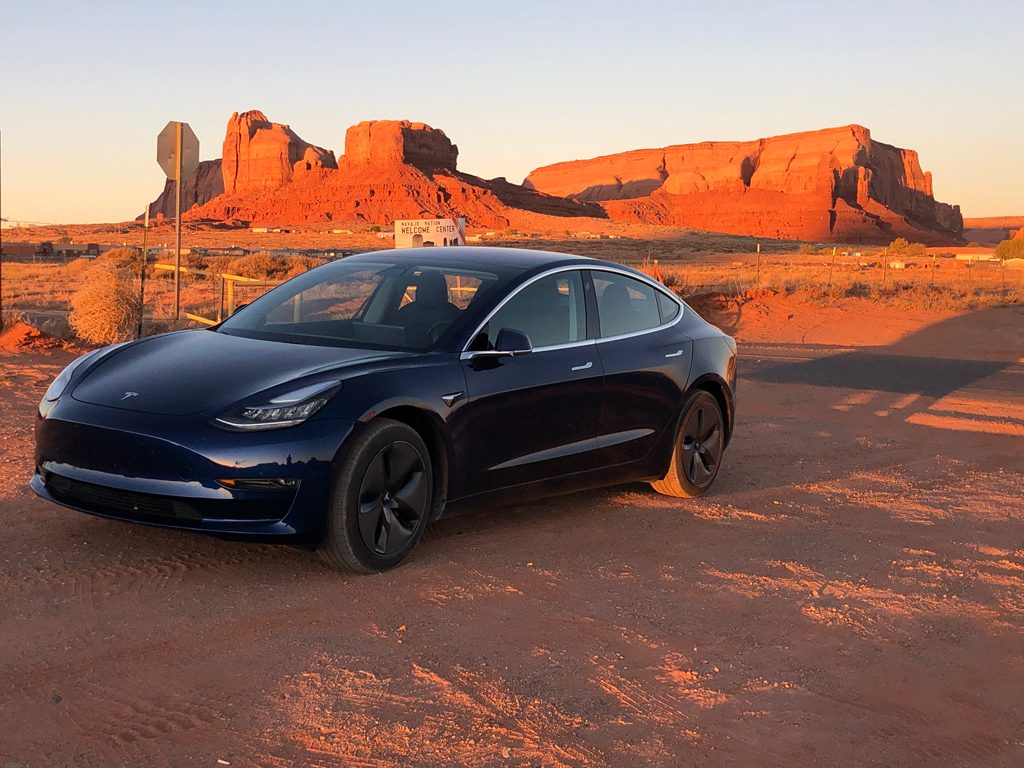
As mentioned above, 80% of my mileage has come from driving between and around those 2 yellow icons on the map below. Red icons are Superchargers I’ve used on road trips. Other icons point out some places of interest.
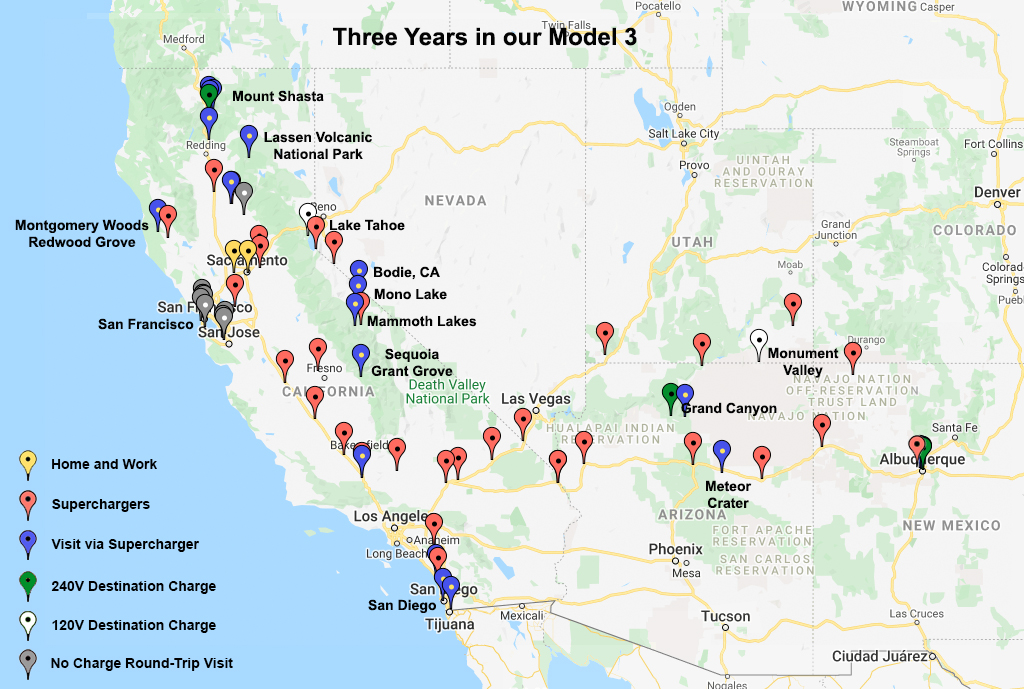
2) Charging
Home: For daily driving I charge my car in the garage. I get home, plug in, and the car charges for about 2 hours during the middle of the night when rates are cheaper. Daily charging is covered in more detail here.
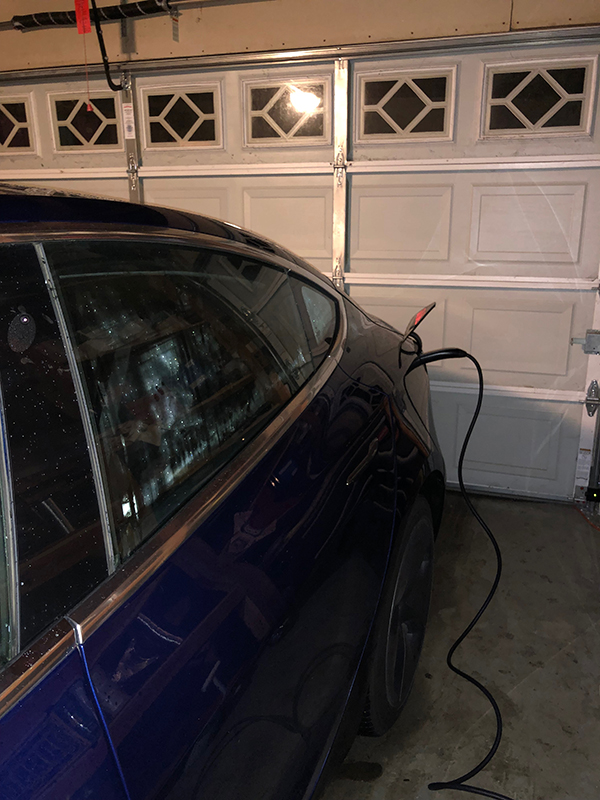
On the road: We use Superchargers for road trips. Very simple: you park and plug in. The cost is automatically charged to the credit card on your account. Pricing varies by state and region. I’ve only used Superchargers about 50 times over the past 3 years.
The pics below show 2 examples of driving between superchargers on major highways. In the top example I charged to 100% then drove 223 miles under pretty ideal conditions (212 Wh/mile). In the bottom I charged to about 90% then drove 163 miles with my family on board under more average conditions (261 Wh/mile). Weather, temp, weight, etc., all affect efficiency. This is true for all cars, gas and electric.
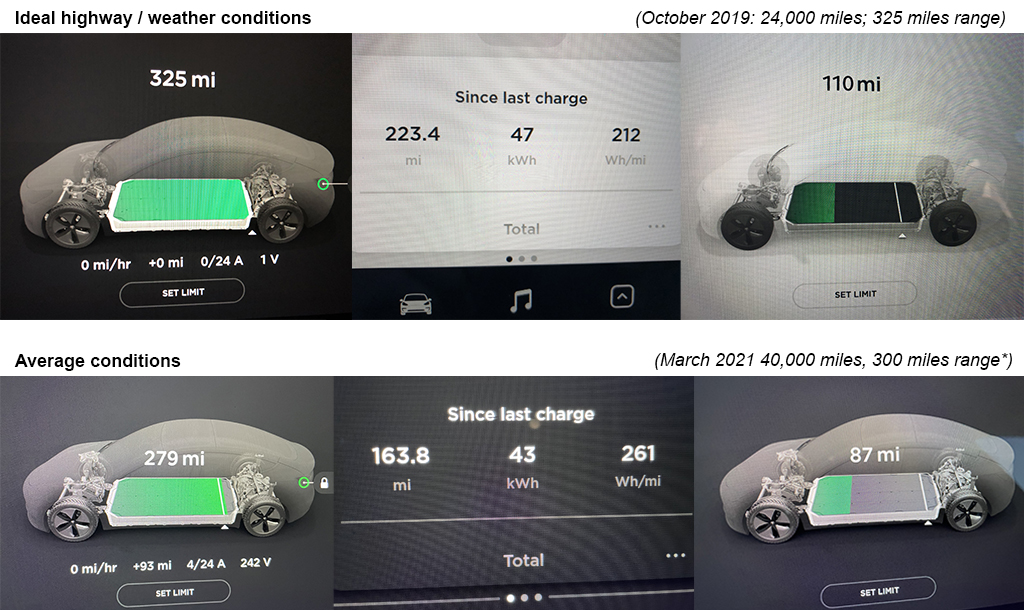
The next chart below shows another way of looking at how road trips work in an EV. On our trip to the Grand Canyon we drove the 800 miles in one day and stopped at five Superchargers along the way. The Driving column has green battery icons that show the rated-range* of the battery pack at the start and finish of each leg – the rated-range consumed for that leg is shown in red parentheses. The Charging column shows range of the battery pack before and after each Supercharging session. The number of minutes spent charging is shown in the red parentheses. Actual distance driven and drive time for each leg are also shown.
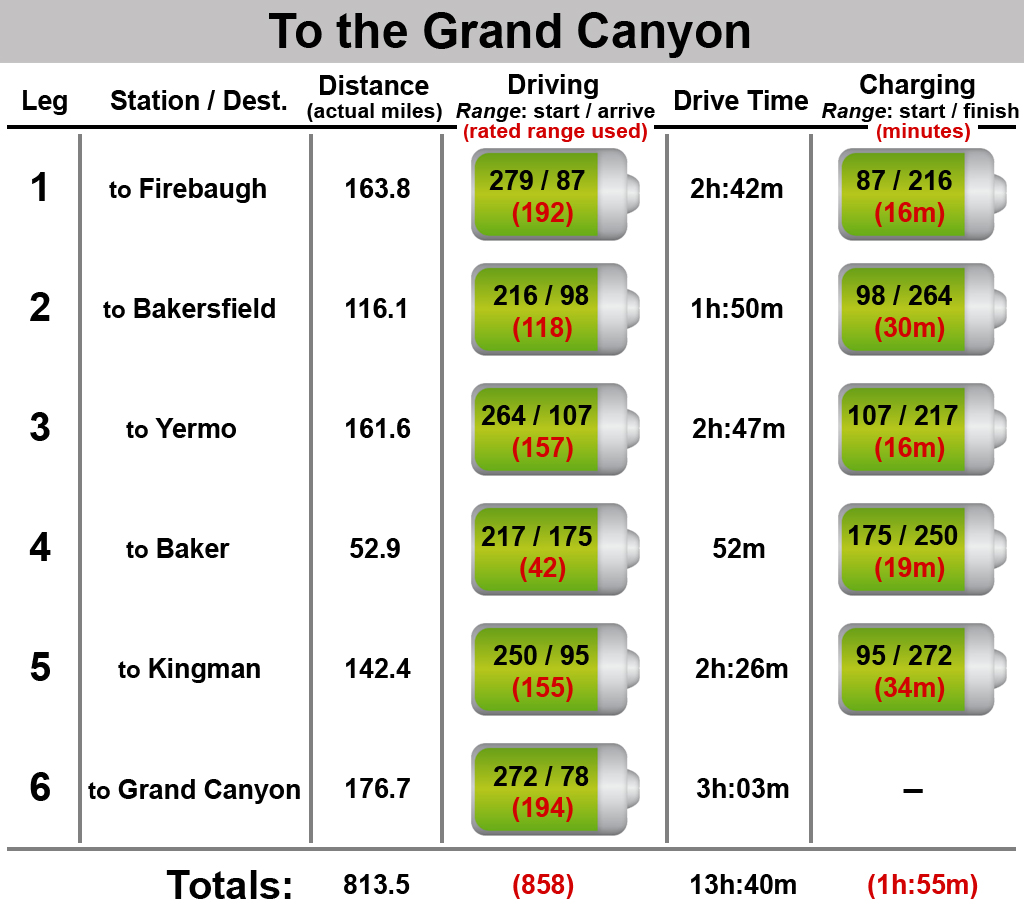
(*Rated-range: the EPA estimate for how far you can drive given the amount of energy stored in your battery pack.)
On my solo 2700 mile trip I stopped every 150 miles for an average of 23 minutes. On our family trip to the Grand Canyon Supercharging stops averaged 19 minutes for the whole round trip. Fastest charging rate I’ve noticed was 222 kW. The longest distance I’ve driven between Superchargers was 223 miles.

At Supercharging stops I grab a bite to eat, get a drink, stretch my legs – it keeps me fresh on the road. If you’re like me you might find you rarely go over 200 miles between stops on the road so the Supercharging mode of road-tripping work well for me.
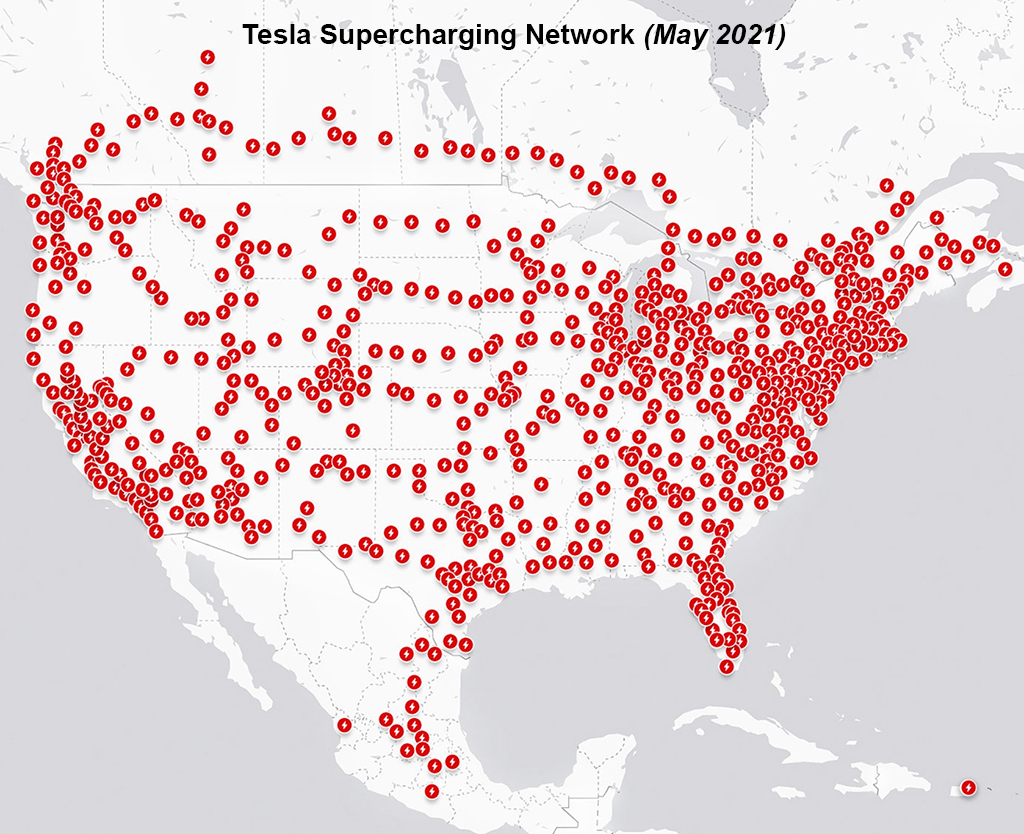
3) Battery Pack Status
My RWD long range Model 3 had 310 miles of range when I bought it, and 325 miles after a software update. I’ve done four 100% charges. The first two pre-update charges gave me 309 and 310 miles, and a post-update charge gave me 325 miles when the car had 24,000 miles. I did another full charge at 43,000 miles and got 300 miles. I’ve done several 90% charges since then and got between 267-279 miles. So that 300 may be plus or minus 3 to 5 miles.
In terms of kWh: Total capacity of the battery pack was 80.5 kWh when new (EPA calc), with ~74.5 kWh usable. The software update increased the usable portion to ~78.2 kWh. I estimate that I’ve got about 72 kWh usable right now.
72 kWh is down 3½ percent compared to the initial 74.5 kWh usable; and 8% down compared to 78.2 kWh. I almost never charge over 90%; 85% of my charging has been on Level 2; and I park in cool places in hot weather. I asked Tesla about my battery pack status and they said it’s slightly above average for 2018’s with similar mileage. From following reports of Tesla battery pack capacity over time it’s clear that degradation is not linear. I’ll be following my pack to see how my car fits on the curve moving forward.

That said, 300 miles is plenty for me. On the last leg of our trip to the Grand Canyon I charged to 90% at the Kingman Supercharger, then drove 176 miles while ascending 3500′ in chilly 35-40F weather and we had plenty remaining in the pack (78 miles) when we arrived. We’re fine, the car does its job.
Summary
Summary: I love the car. It’s very efficient, takes care of our daily needs, and allows us to drive electric while visiting places we’ve always wanted to see.
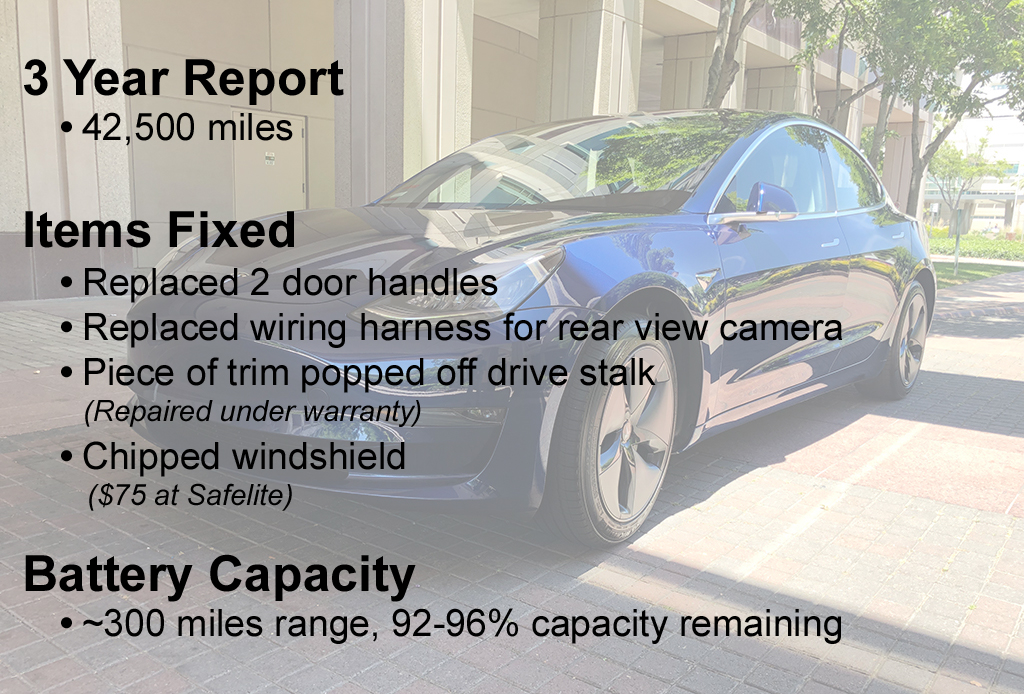
Next up in my three-year review: Energy use and Emissions.
This guest post from Steve Noctor originally appeared on his blog It’s Electric.
